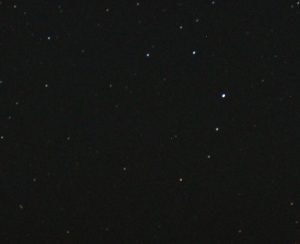
Among the many fascinating constellations that grace our night sky, Corona Borealis, the Northern Crown, stands out with its elegant arc of stars. This small but distinct constellation is one of my favorites to observe, offering a celestial jewel box nestled between the larger constellations of Boötes and Hercules. While it may not be as well-known as Orion or Ursa Major, Corona Borealis has a quiet beauty that makes it a rewarding sight for amateur astronomers.
Mythology and History
Corona Borealis has deep roots in mythology. In Greek legend, it represents the crown of Ariadne, the daughter of King Minos of Crete. After helping Theseus defeat the Minotaur, Ariadne was abandoned on the island of Naxos, where the god Dionysus found and married her. As a wedding gift, he cast her crown into the sky, where it became the constellation we see today. This rich mythological background adds an extra layer of wonder to observing the Northern Crown.
How to Find Corona Borealis
Locating Corona Borealis is relatively easy. Look for Boötes, the Herdsman, which is recognizable by its bright star Arcturus—one of the brightest stars in the sky. From there, scan slightly to the west, and you’ll notice a semicircular pattern of stars forming the arc of the crown. The best time to observe it is during late spring and summer when it is high in the night sky in the Northern Hemisphere.
Notable Stars and Deep Sky Objects
The brightest star in the constellation is Alphecca (also called Gemma), a magnitude 2.2 star that serves as the “gem” of the crown. Alphecca is actually a binary star system, with a companion that periodically dims its brightness.
Another interesting star in Corona Borealis is T Coronae Borealis, also known as the Blaze Star. This is a recurrent nova that unpredictably brightens from magnitude 10 (too faint to see with the naked eye) to around magnitude 2, making it briefly as bright as Alphecca. The last recorded eruption was in 1946, and astronomers predict it could flare up again within our lifetime—something to keep an eye on!
Observing Tips
Since Corona Borealis consists of relatively faint stars, finding a dark-sky location away from city lights will enhance your viewing experience. A pair of binoculars will help reveal more stars within the arc, and if you have a telescope, you might explore some of the binary stars and deep-sky objects within its bounds. It’s a small but fascinating constellation that rewards patient observation.
Final Thoughts
While Corona Borealis may not dominate the night sky, it offers a beautiful and easily recognizable pattern that has enchanted stargazers for centuries. Whether you’re drawn to its mythology, its distinctive shape, or the chance to witness a rare nova event, this constellation is well worth your attention during your next night under the stars.